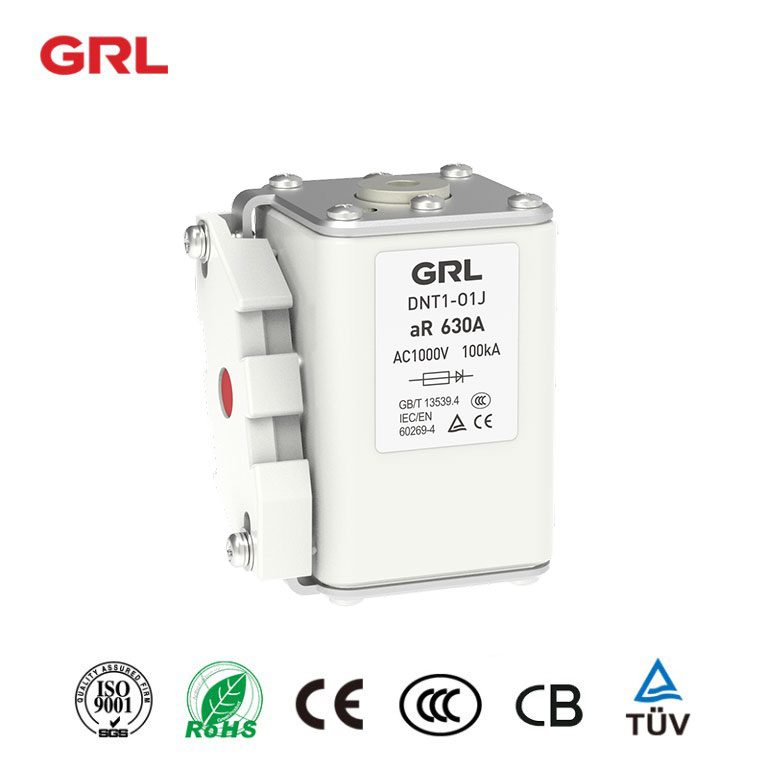
# Semiconductor Fuse Link Technology and Applications
## Introduction to Semiconductor Fuse Links
Semiconductor fuse links are specialized protective devices designed to safeguard sensitive electronic components from overcurrent conditions. These fuses play a critical role in power electronics, industrial automation, and renewable energy systems where semiconductor devices like IGBTs, MOSFETs, and thyristors require precise protection.
## How Semiconductor Fuse Links Work
Unlike traditional fuses, semiconductor fuse links are engineered to respond extremely quickly to fault conditions. They operate on the principle of rapid melting when exposed to excessive current, typically within milliseconds. The fuse element is designed to:
– Detect overcurrent conditions faster than conventional fuses
– Interrupt the circuit before semiconductor devices can be damaged
– Withstand normal operating currents without degradation
– Provide reliable protection against short circuits
## Key Characteristics of Semiconductor Fuse Links
High-performance semiconductor fuse links exhibit several important characteristics:
### Fast-Acting Protection
These fuses can interrupt fault currents in as little as 1/4 cycle (5ms at 50Hz), significantly faster than standard fuses which may take several cycles to respond.
### High Breaking Capacity
Semiconductor fuse links are designed to safely interrupt very high fault currents, often in the range of tens to hundreds of kiloamperes.
### Low I²t Value
The I²t (ampere-squared seconds) value represents the thermal energy the fuse can withstand before operating. Semiconductor fuses have particularly low I²t values to protect sensitive components.
### Voltage Ratings
These fuses are available for various voltage applications, typically ranging from 250V to several kilovolts, making them suitable for both low and high-voltage circuits.
## Applications of Semiconductor Fuse Links
Semiconductor fuse links find applications in numerous industries and systems:
### Power Electronics
They protect inverters, converters, and motor drives in industrial equipment, ensuring reliable operation of power semiconductor devices.
### Renewable Energy Systems
In solar and wind power installations, these fuses safeguard the power conversion equipment from fault conditions.
### Transportation
Electric vehicles and railway systems utilize semiconductor fuse links to protect their power electronics from damage due to short circuits.
### Industrial Automation
Modern manufacturing equipment with variable frequency drives and servo systems rely on these fuses for protection.
## Selection Considerations
When choosing a semiconductor fuse link, engineers must consider several factors:
– Rated voltage and current of the protected circuit
– Available short-circuit current at the installation point
– Ambient temperature conditions
– Required response time based on semiconductor characteristics
– Physical size and mounting requirements
– Compliance with relevant safety standards
## Maintenance and Replacement
Proper maintenance of semiconductor fuse links includes:
– Regular visual inspections for signs of damage or degradation
– Verification of proper fuse ratings during replacement
– Ensuring correct mounting and connection tightness
– Following manufacturer guidelines for storage and handling
When replacing blown fuses, it’s crucial to use identical specifications to maintain the designed protection level.
## Future Trends in Semiconductor Fuse Technology
Keyword: Semiconductor Fuse Link
The semiconductor fuse link industry continues to evolve with advancements in:
– Materials science for better performance characteristics
– Miniaturization to accommodate smaller electronic devices
– Smart fuse technologies with monitoring capabilities
– Higher voltage ratings for next-generation power systems
– Improved arc suppression techniques for safer operation
As power electronics become more prevalent across industries, the importance of reliable semiconductor fuse links will only continue to grow.